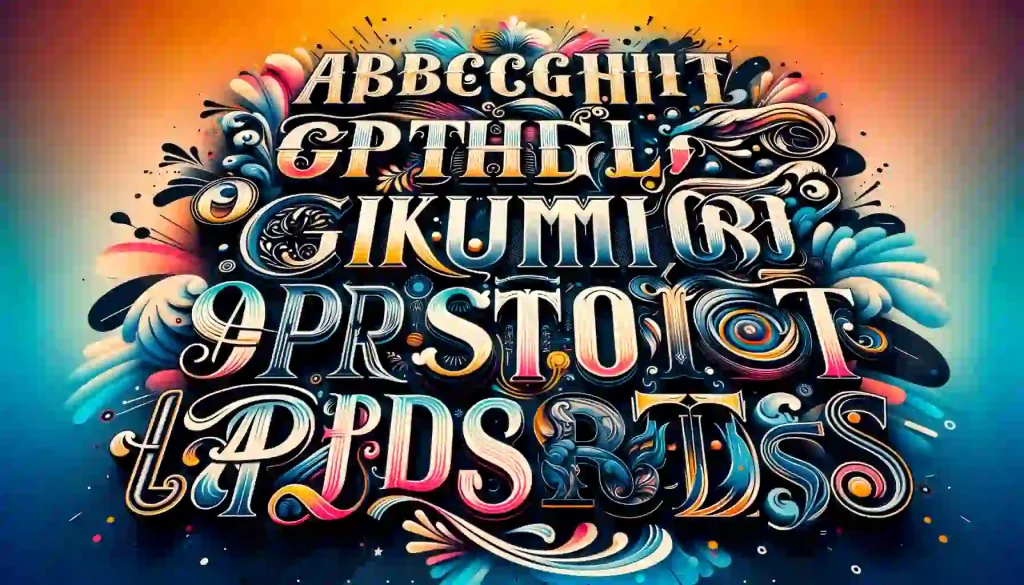Alight motion Fonts play a crucial role in enhancing the visual appeal and effectiveness of video and animation projects. They add personality, convey mood, and help communicate the message more effectively. When it comes to creating engaging and dynamic content, having access to a diverse range of fonts is essential.
This comprehensive guide explores the world of fonts for video editing and animation software, focusing on how to select, import, and utilize fonts to elevate your projects.
You may like techlaraspot.com
Font Significance
Fonts are more than just letters; they’re a tool for visual communication. Each font carries its own character and can influence the perception of your content. From elegant and classic to modern and quirky, the right font can make your project stand out. It’s crucial to choose fonts that align with the theme and tone of your project.
Font Selection Criteria
When selecting fonts, consider the following aspects:
Legibility
Ensure the font is easy to read at various sizes, especially for subtitles or detailed information.
Compatibility
The font should be compatible with your video editing and animation software, ensuring smooth performance.
Licensing
Always use fonts that are licensed for commercial use if your project is intended for commercial purposes.
How to Import Fonts?
Most video editing and animation software allows for custom font importation, enabling users to bring in their unique font collections. Here’s a general guide on importing fonts:
Download Fonts
Choose fonts from reputable font libraries. Ensure they are in a compatible format (typically .ttf or .otf).

Installation
Fonts may need to be installed on your device. On most operating systems, this involves opening the font file and selecting “Install.”
Software Import
In your video editing or animation software, look for the option to add or import fonts, which is usually found in the settings or preferences menu.
Utilizing Fonts Creatively
With your fonts imported, the next step is to use them creatively. Here are some tips:
Layering
Combine different fonts to add depth and dimension to your text. Pair a bold font for headings with a simple, legible font for body text.
Animation
Animate your text to make it pop. Consider effects like fading, sliding, or scaling to draw attention.
Color and Contrast
Use color and contrast effectively to make your text stand out against the background. Ensure there’s enough contrast for readability.
Best Practices
Consistency
Maintain consistency in your font usage to create a cohesive look and feel.
Experimentation
Don’t be afraid to experiment with different fonts to find the perfect match for your project.
Optimization
Keep an eye on performance. Using a large number of fonts or complex animations may impact the software’s responsiveness.
Types of different fonts
The specific fonts available in any video editing or animation application, such as the one you’re asking about, can vary based on the version of the software, the fonts installed on the user’s device, and any additional font packs that may be offered by the application developers or available through in-app purchases.
Generally, these applications allow users to import custom fonts, expanding the range of typographic styles they can use in their projects. Here’s a general overview of the types of fonts users might be able to use or import into a video editing or animation app:
System Fonts
These are the fonts that come pre-installed with the device’s operating system. Users can typically use these fonts directly in their projects without needing to import anything.
Custom Fonts
Users can often import custom fonts into their projects. These can include:
Free Fonts
Available from various online font libraries, these can range from classic to modern styles, including serif, sans-serif, script, and display fonts.
Commercial Fonts
Purchased from font foundries or designers, these fonts offer unique styles or specific typefaces that are licensed for personal or commercial use.
Specialty Fonts
Fonts designed for specific purposes, like handwriting simulation, decorative uses, or to mimic historical typographic styles.
Font Packs
Some apps offer font packs as part of in-app purchases or as free downloads. These packs can be themed to fit various project types, such as cinematic titles, animated kids’ content, or sleek modern designs.
Popular Font Categories
Serif Fonts
Known for their decorative feet, serif fonts convey a classic, formal feel. Examples include Times New Roman and Georgia.
Sans-Serif Fonts
Lacking the decorative feet of serif fonts, sans-serif fonts offer a cleaner, more modern appearance. Examples include Arial and Helvetica.
Display Fonts
These fonts are designed to grab attention and are best used in titles or short bursts of text. They can range from bold and impactful to quirky and whimsical.
Script Fonts
Mimicking handwriting, script fonts can add a personal touch to projects. They range from elegant calligraphic styles to casual, loose scripts.
Conclusion
The right fonts can significantly enhance the quality and impact of your video and animation projects. By carefully selecting, importing, and creatively using fonts, you can create content that captures attention and communicates your message effectively.
Remember to prioritize legibility, compatibility, and licensing when choosing fonts, and always explore new ways to incorporate them into your projects for maximum effect. With these tips in mind, you’re well on your way to mastering the art of font utilization in your video editing and animation endeavors.